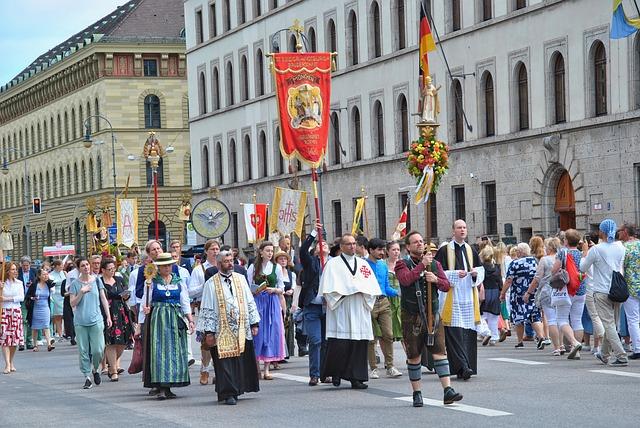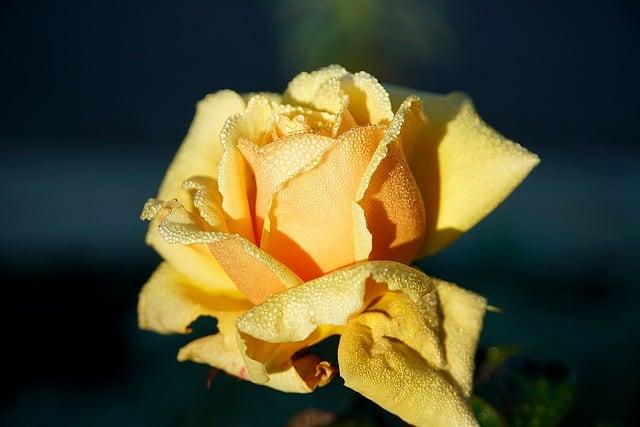As the first Sunday of Advent approached, the small village church buzzed with anticipation. The priest, Father Miguel, stood before the congregation, holding a vibrant purple cloth. “This is the color of Advent,” he explained, “symbolizing penance and preparation.” The children’s eyes widened, imagining the deep purple of twilight skies, a reminder of the coming light. Each week, as the candles flickered to life, the purple cloth transformed the church, inviting all to reflect and await the joyous celebration of Christmas.
Table of Contents
- Understanding the Significance of Advent Colors in Catholic Tradition
- Exploring the Meaning Behind the Liturgical Color Purple
- The Role of Rose in Advent Celebrations
- Practical Tips for Incorporating Advent Colors into Your Worship Space
- Q&A

Understanding the Significance of Advent Colors in Catholic Tradition
The colors used during Advent hold deep significance within the Catholic tradition, serving as visual reminders of the themes of hope, preparation, and anticipation. **Purple**, the primary color of Advent, symbolizes penance and royalty, reflecting the dual nature of this season as both a time of reflection and a preparation for the coming of Christ the King. This rich hue invites the faithful to engage in a period of spiritual renewal, encouraging them to contemplate their relationship with God and the promise of salvation. In some communities, **rose** is introduced on the third Sunday of Advent, known as Gaudete Sunday, representing joy and the nearing of Christmas. This shift in color serves as a beacon of hope, reminding the faithful that the wait is almost over and that joy is on the horizon.
In addition to purple and rose, the use of **white** during the Christmas season that follows Advent signifies the purity and light of Christ’s birth. This transition from the somber tones of Advent to the celebratory colors of Christmas illustrates the journey from anticipation to fulfillment. The interplay of these colors throughout the liturgical calendar not only enhances the visual experience of worship but also deepens the spiritual significance of the season. By understanding the meanings behind these colors, the faithful can more fully engage in the Advent journey, embracing the themes of waiting, hope, and joy as they prepare to celebrate the birth of Jesus Christ.
Exploring the Meaning Behind the Liturgical Color Purple
The liturgical color purple holds a profound significance within the Catholic tradition, particularly during the seasons of Advent and Lent. This rich hue symbolizes **penitence**, **reflection**, and **preparation**. As the Church prepares to celebrate the birth of Christ, purple serves as a reminder for the faithful to engage in introspection and spiritual renewal. It invites believers to embrace a period of waiting and anticipation, fostering a deeper connection to the mystery of the Incarnation. The use of purple vestments and altar cloths during this time creates an atmosphere conducive to prayer and contemplation, encouraging the faithful to prepare their hearts for the coming of the Lord.
Moreover, purple is often associated with **royalty** and **majesty**, reflecting the belief that Christ is the King of Kings. This duality of meaning enriches the experience of Advent, as it not only calls for a humble acknowledgment of one’s shortcomings but also celebrates the hope and joy that the arrival of the Savior brings. The color serves as a visual cue, guiding the congregation through the liturgical calendar and reminding them of the sacred journey they embark upon each year. In this way, purple becomes a powerful symbol of both the solemnity of the season and the joyous expectation of Christ’s coming into the world.

The Role of Rose in Advent Celebrations
In the liturgical calendar, the color rose holds a special significance during the Advent season, symbolizing a moment of joy amidst the anticipation of Christ’s coming. Traditionally, the third Sunday of Advent, known as Gaudete Sunday, is marked by the use of rose vestments and altar decorations. This shift in color serves as a reminder to the faithful that the season of waiting is not solely one of penance and reflection, but also of hope and joy. The rose hue invites the congregation to rejoice, as it signifies the nearing of Christmas and the fulfillment of God’s promise.
The use of rose during Advent is not merely aesthetic; it carries profound theological implications. It encourages the faithful to embrace a spirit of joy and gratitude, even as they prepare their hearts for the solemnity of Christ’s birth. This color serves as a visual cue to reflect on the blessings already present in their lives, fostering a sense of community and shared anticipation. Key aspects of this celebration include:
- Joyful Anticipation: A reminder that the wait for Christ is filled with hope.
- Community Celebration: An opportunity for congregations to come together in joy.
- Spiritual Reflection: Encouraging individuals to find joy in their faith journey.

Practical Tips for Incorporating Advent Colors into Your Worship Space
Incorporating the rich hues of Advent into your worship space can transform the atmosphere and deepen the spiritual experience for your congregation. Start by selecting **deep purple** or **violet** as the primary color, symbolizing penance and preparation. Consider draping altar cloths, banners, and other textiles in these shades to create a cohesive look. You might also use **blue**, which represents hope and expectation, as an alternative to purple in some traditions. Enhance the visual impact by adding **gold** accents, which signify the joy of the coming celebration, perhaps through candle holders or decorative elements that catch the light.
To further engage the senses, think about incorporating **natural elements** that reflect the season. Use evergreen garlands or wreaths adorned with purple and pink candles to create a focal point. The **rose** candle, lit on the third Sunday of Advent, can be a striking addition, symbolizing joy amidst the waiting. Additionally, consider using **artwork** or **icons** that depict Advent themes, such as the Nativity or the Annunciation, to inspire reflection. By thoughtfully integrating these colors and elements, you can cultivate a worship space that invites your community to embrace the spirit of Advent fully.
Q&A
-
What is the primary color associated with Advent?
The primary color for Advent is purple. This color symbolizes penance, preparation, and royalty, reflecting the anticipation of Christ’s coming.
-
Are there any other colors used during Advent?
Yes, rose is also used, particularly on the third Sunday of Advent, known as Gaudete Sunday. This color signifies joy and the nearing of Christmas.
-
Why is purple used during Advent?
Purple is traditionally associated with the season of Advent as it represents a time of reflection and waiting, preparing the faithful for the celebration of Christmas.
-
How do the colors of Advent differ from those of Lent?
While both Advent and Lent use purple to signify penance, Advent focuses on the joyful anticipation of Christ’s birth, whereas Lent emphasizes repentance and preparation for Easter.
As we embrace the season of Advent, let the rich hues of purple guide our hearts toward reflection and anticipation. May this sacred color remind us of hope and preparation, illuminating our journey as we await the joy of Christmas.

大家好,我是彼得潘,專業的手法身體治療師。我喜歡探索和研究各種主題,並透過與人工智慧的合作分享專業、實用、有趣的文章。我們定期進行人工審核,以確保內容的準確性。如果您發現文章中有任何不準確的地方,請隨時與我們聯繫,我們會及時糾正。您可以透過 [email protected] 與我們聯繫。



